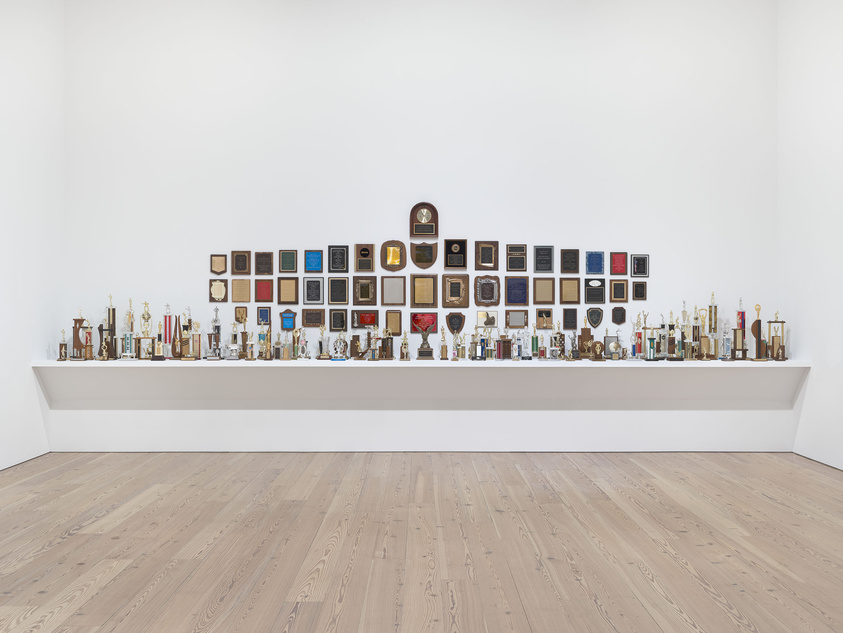Carl Pope, Some of the Greatest Hits of the New York City Police Department: A Celebration of Meritorious Achievement in Community Service, 1994
From An Incomplete History of Protest
Aug 18, 2017
0:00
Carl Pope, Some of the Greatest Hits of the New York City Police Department: A Celebration of Meritorious Achievement in Community Service, 1994
0:00
Narrator: Carl Pope called this work Some of the Greatest Hits of the New York City Police Department: A Celebration of Meritorious Achievement in the Community. It was his second work using trophies. He made the first about his hometown, Indianapolis, Indiana, where Police Officer Scott Haslar received an award for killing an unarmed Black man, Leonard Barnett. For this work, Pope researched killings that took place in New York between 1949 and 1994.
Carl Pope: Hi, my name is Carl Pope.
This trophy collection maps the history of police brutality and trophy design, but it also traces a third history—the history of rewards that officers receive for killing Black crime suspects. We see that sort of history of rewards for police action killings, police action beatings, through promotions. Like the officer who choked Eric Garner, he received a pay raise. Sometimes they win medals of valor. I think what makes the trophy collection so compelling is that it brings those rewards to public notice, in the minds of people who normally would not make that connection between the rewards that officers receive and why they receive those rewards.
When I first did the collection, people were a little shocked by it. Michael Kimmelman, at The New York Times called the trophy collection “overblown.”
Twenty-four years later, the reality of the trophy collection and what it mapped, what it implies, is no longer just some visual metaphor. The trophies are not a visual device anymore. The trophies actually are a little more literal than they were when I made them. That's a reality that the families of those people who were killed by the police knew. And I think that reality is becoming more of a reality for the rest of us.
